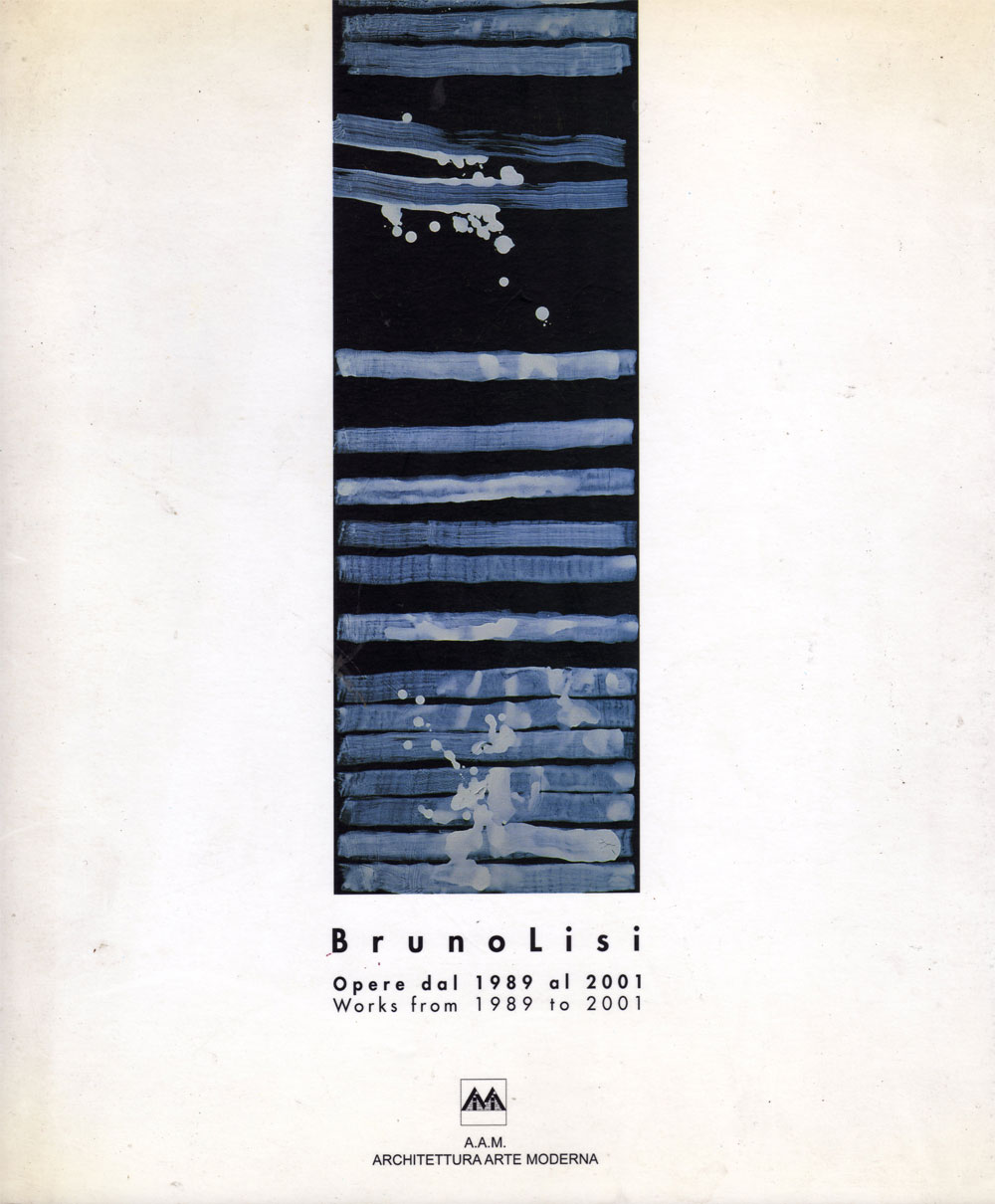Bruno Lisi’s BLU – mysterious, visionary, solemn, pure. Years later, I behold it again and discover intact tense and absolute sensations that spring from the depths of the soul. Fatal oceans, turning tides, skies full of violent darkness and glassy, metallic lights, lazuli corals, sponges and seaweed, clouds and air, cosmic breaths, the fragrance of infinity, authentic spaces of illumination where it is possible to cultivate the certainty of constant, absolute doubt and precariousness, expectation and perfection, peace and solitude. Paintings with a blue and harmonic aspect, pervaded by flashes of suffused uranic light, by luminous breath, an unreal aura of visual Nirvana in a world of people and things that are mostly serial and self-contained. They speak the language of meaningful emptiness, a peculiarity of both Oriental philosophies’ interior exploration and the radical line of painting. Giotto’s blue skies, Kandinsky’s abyssal resonances, Klein’s Blue dipinto di blu with mille bolle blu from his playful and esoteric universe…. Blue as in a quintessence of art’s energy and spiritual value, not just as an aesthetic product but also, and above all, as an act which creates and qualifies the relationship with others, nature, things and everyday life and that involves a deep spirituality – not transcending but at one with reality.
“… I don’t begin by thinking in a rational way ‘now, I’m going to paint a blue painting.’ Instead, it is the blue itself which seizes my hand and at that point, I let myself be overwhelmed,” Lisi confides. It amounts to emptying out one’s mind, heart and body; allowing this particular dimension to manifest itself in the full objectivity of the work and “reawakening” the awareness of one’s own void as taught by the Oriental philosophies of impermanence. The artist knows that to practice the aesthetic of the void means advancing along the path of no return in the search for pure pictorial form, not in a speculative sense nor that of pursuing conceptual value, but fulfilling the experience of the void as an energetic principle inherent in time and space, something that has fascinated and inspired entire generations of artists, revitalising experimentation and the language of art in the broadest sense.
Lisi’s BLU appears at the end of the 1970s, permeates the Sincroni cycle during the mid-80s, then recedes only to reappear in the second half of the following decade in the anomalous wave of the Variazioni, an installation – open to the influence of the place it occupies – of condensed, rectangular spirituality, windows on the geography of the infinite, leaps into empty space, plunges into the depths of humanity and of painting, freedom zones. The comparison with music is inevitable since, together with painting, it is the expression closest to the spiritual life of the artist, to “his inner needs” as Kandinsky put it. To emphasise the peculiarity of colour, Kandinsky would talk about a man from Dresden whom he described as one “endowed with rare spiritual gifts who always and unfailingly felt the taste of a certain sauce to be ‘blue’, or rather he perceived it as the colour ‘blue’”. Kandinsky believed that such a faculty belonged to highly evolved beings gifted with direct access to the soul through the senses, a phenomenon that he compared with resonance in the field of music.
The essential point today is that art must return to stimulating and springing from emotion, that is, the work of art must become the vehicle for establishing this extraordinary equivalence – which cannot be put into words and cannot be forced into a concept – which suggests the complex, unintellectualised experience of reality. Art should silently evoke the mysterious and unfathomable nature of life beyond appearance and the coexistence of opposites, the indissoluble link between the search for the immaterial, and material life, in the direction of beauty. Painting, like music, writing and other art forms, stems from the need to communicate among individuals, to express the depths of one’s being, as Gao Xingjian, the Nobel prize winner for literature, has stressed, with typical Oriental essentiality. He analyses the crucial issue of aesthetic sensibility in the East and West through intrinsic analogies between ideographs and painting: “The visual arts have used various expressive and representational means to disclose the real world, dreams and chimerical visions and, via the abstract, have opened up space for feelings and inner visions which reach beyond the intellect and concepts and cannot be dissociated from sensitive experience. To get to the places where reason is incapable of arriving, one must turn to art.”
Lisi’s cold and incandescent BLU is born from the desire to create only paintings that are necessary, works which are necessary and vital and can therefore be experienced through all of our senses. They are an enigmatic and reassuring presence, pure, spiritual expressions of an artist gifted with intense and far-reaching sensitivity. Mysterious, visionary, solemn, pure.
(translated by Michele Von Büren)
(from the catalogue of the exhibition: “Opere dal 1989 al 2001”, Galleria A.A.A. Palazzo Brancaccio, 26 November 2001-26 February 2002)
